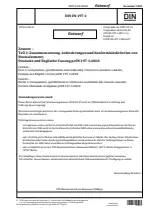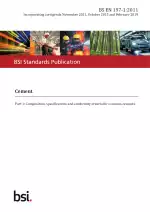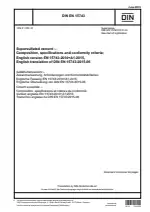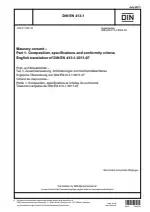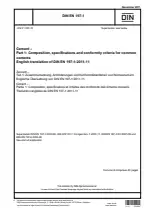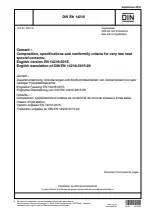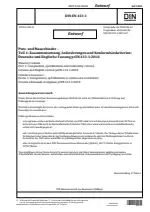Cement - Part 1: Composition, specifications and conformity criteria for common cements
Also Known As:
The DIN EN 197-1 standard defines and provides specifications for various types of common cements, including sulfate-resisting cements and low early strength blast furnace cements. The standard outlines the proportions in which the constituents of these cements should be combined to achieve different strength classes. It also sets requirements for the constituents in terms of mechanical, physical, and chemical properties.
The standard defines conformity criteria and related rules for these cements and includes durability requirements. It acknowledges that there are other cements with sulfate resisting properties that may conform to this standard or other European or national standards, and these cements are listed in Annex A. However, it explicitly excludes some specific types of cement from its scope, such as very low heat special cement, supersulfated cement, calcium aluminate cement, and masonry cement.
| Descriptors | Alkalinity, Building lime, CE marking, Cements, Certificates of conformity, Certification (approval), Chemical composition, Chemical properties, Components, Composition, Conformity, Conformity testing, Construction, Construction materials, Constructional products, Definitions, Designations, Durability, Heat of hydration, Main constituents, Marking, Mass concentration, Mechanical properties, Mechanical testing, Physical properties, Properties, Resistance, Scope, Specification, Specification (approval), Strength of materials, Sulphate-resisting cement, Symbols, Testing, Total alkalinity, Ingredients, Permanency |
| ICS Codes | 91.100.10 - Cement. Gypsum. Lime. Mortar |
| Language(s) | English + German |
| File Size | 2.0 MB |

